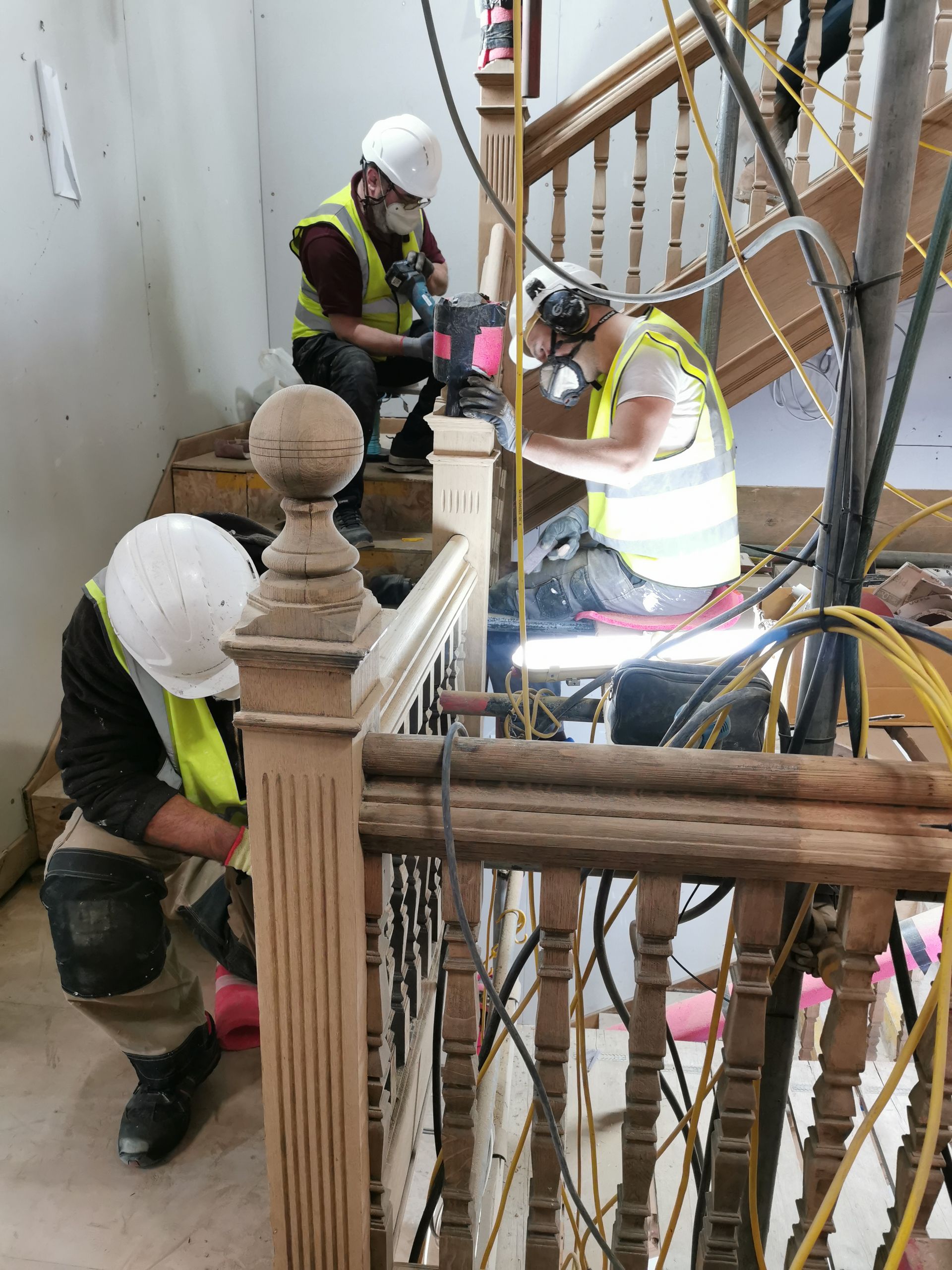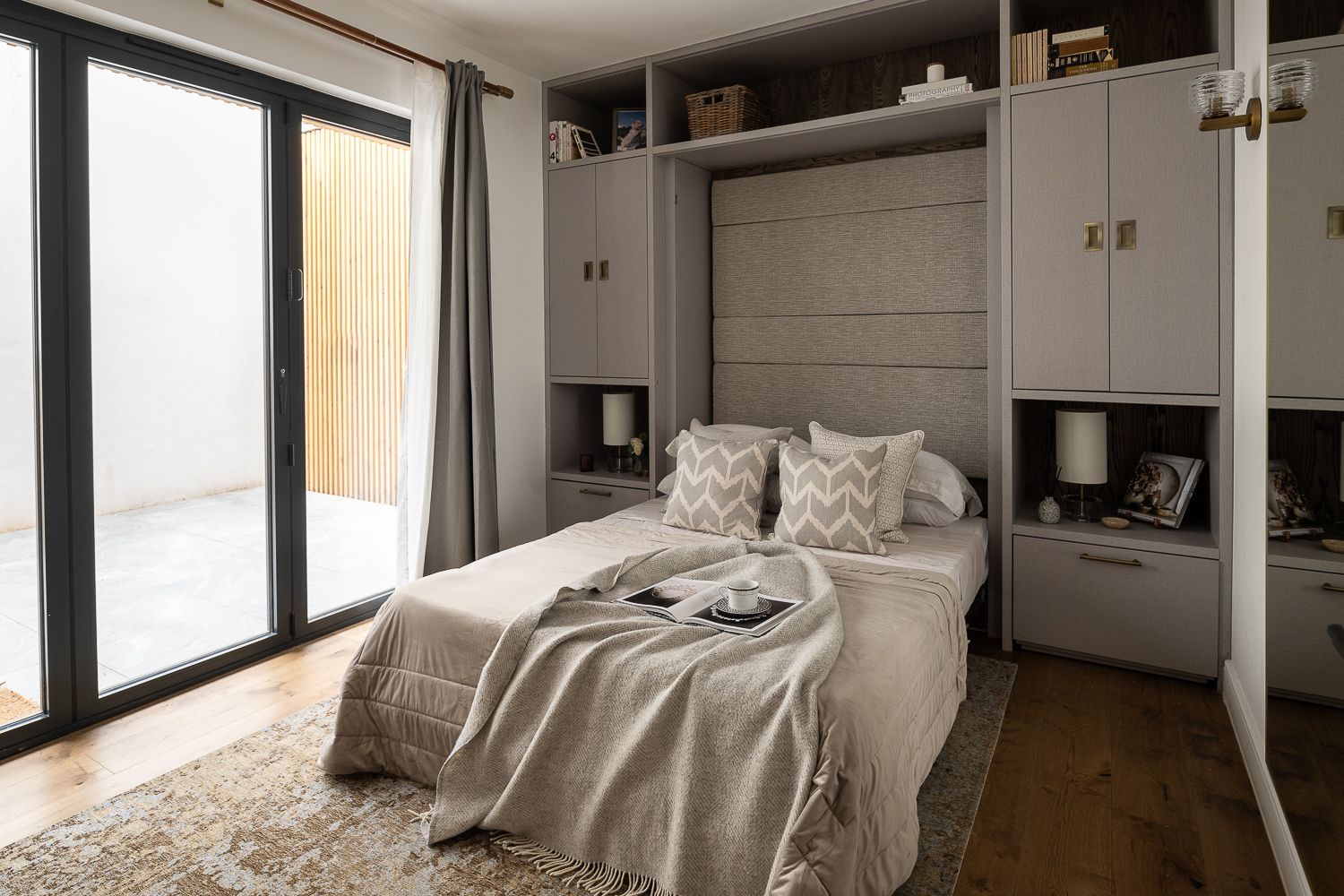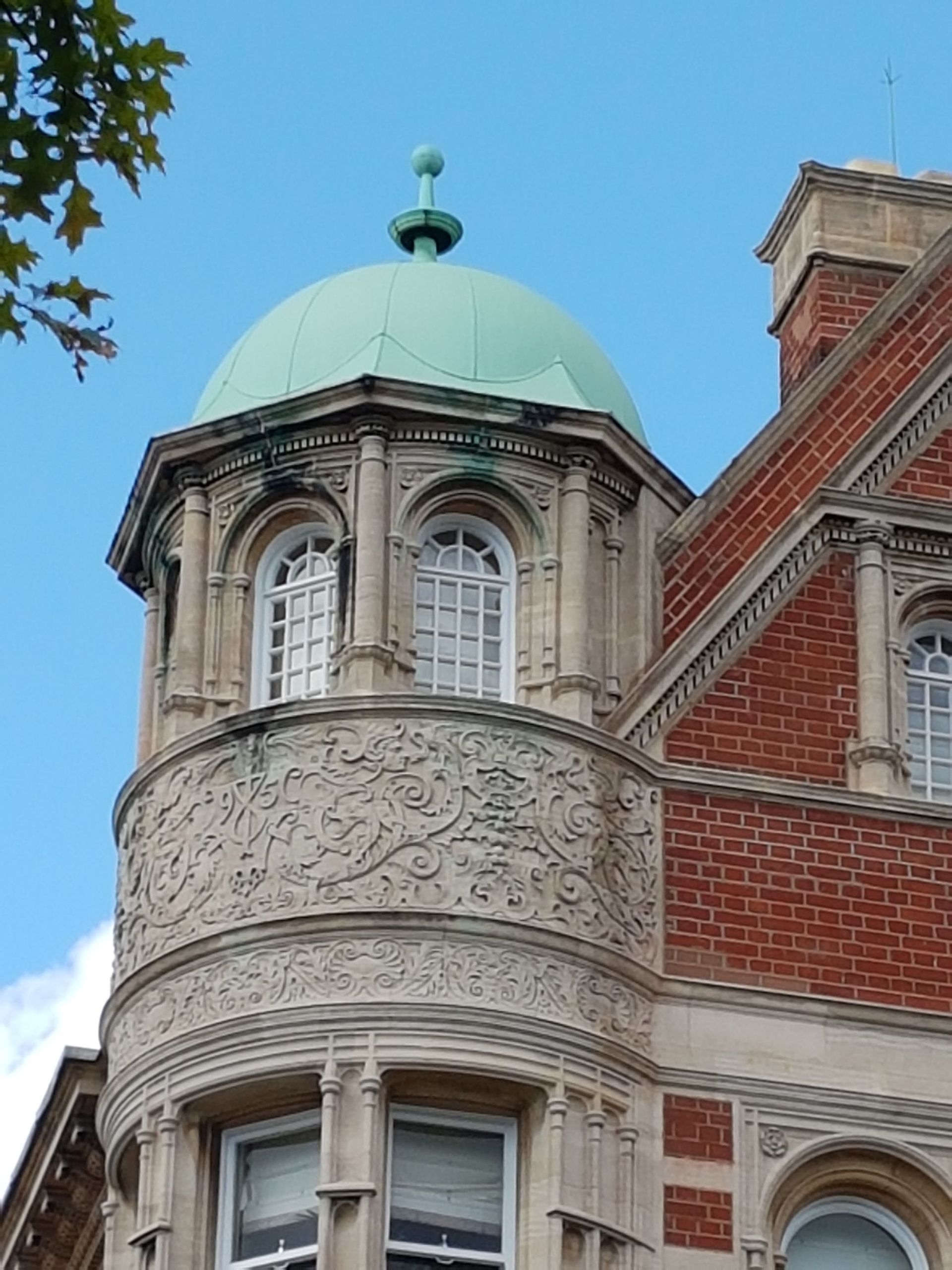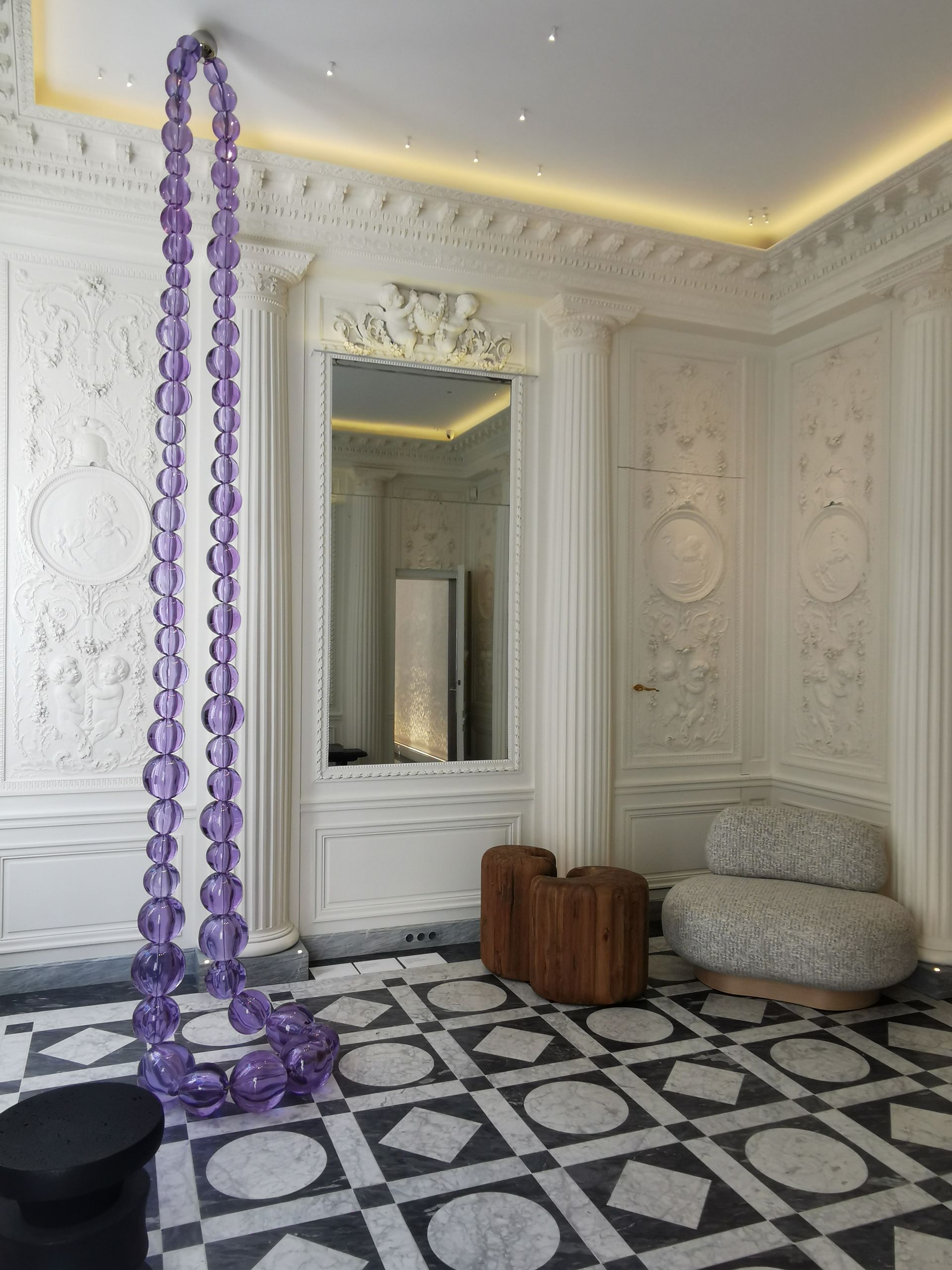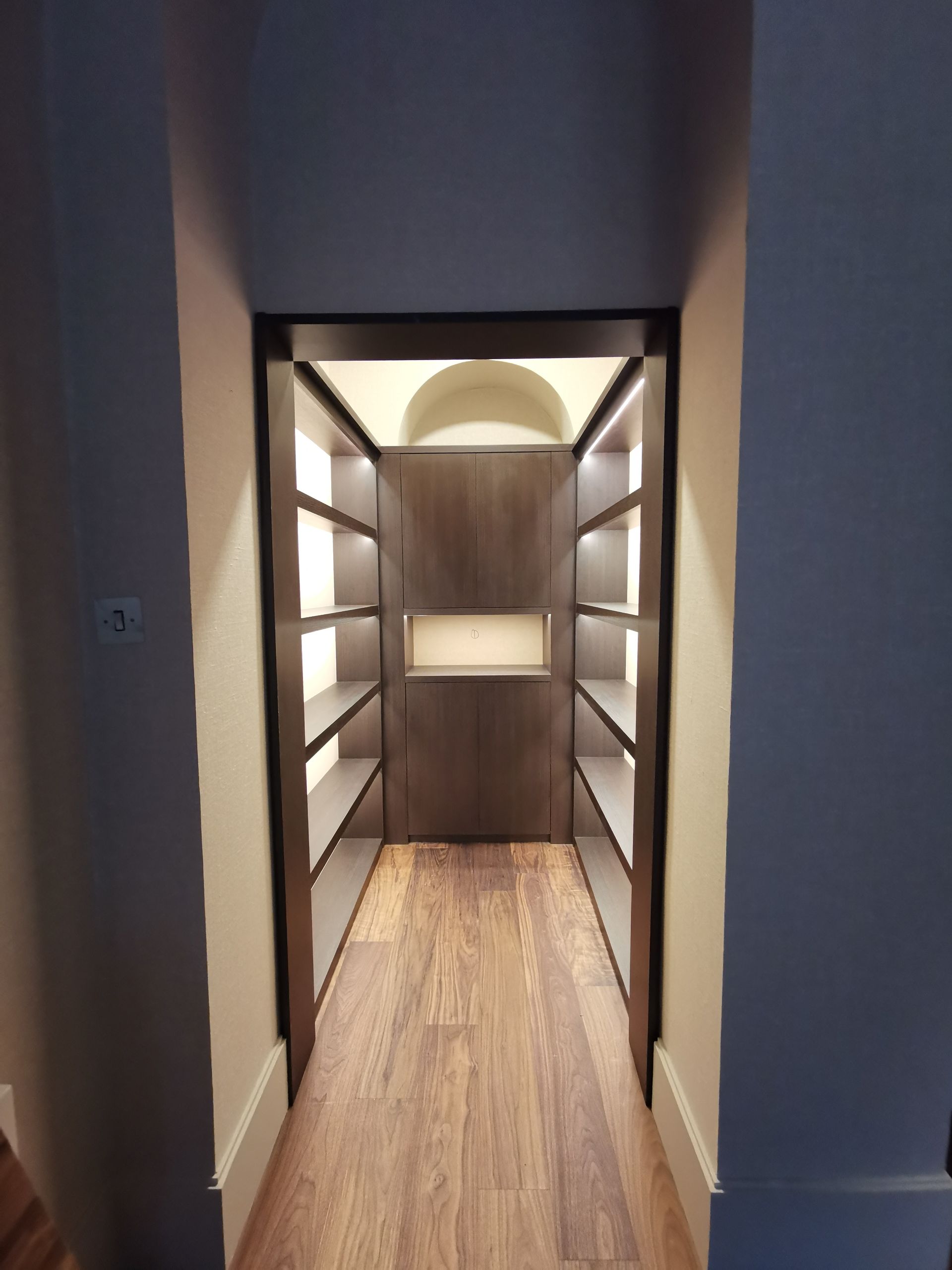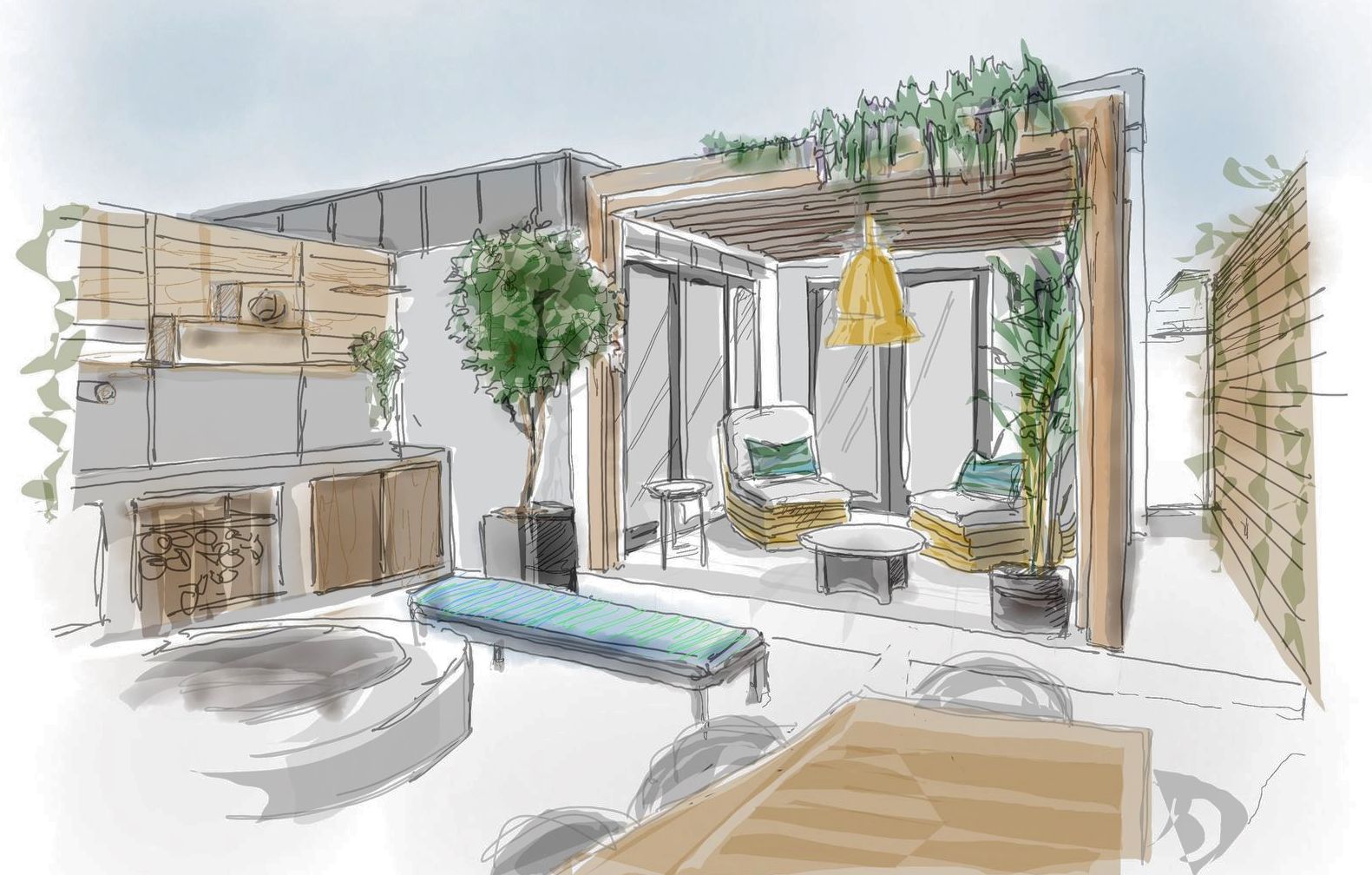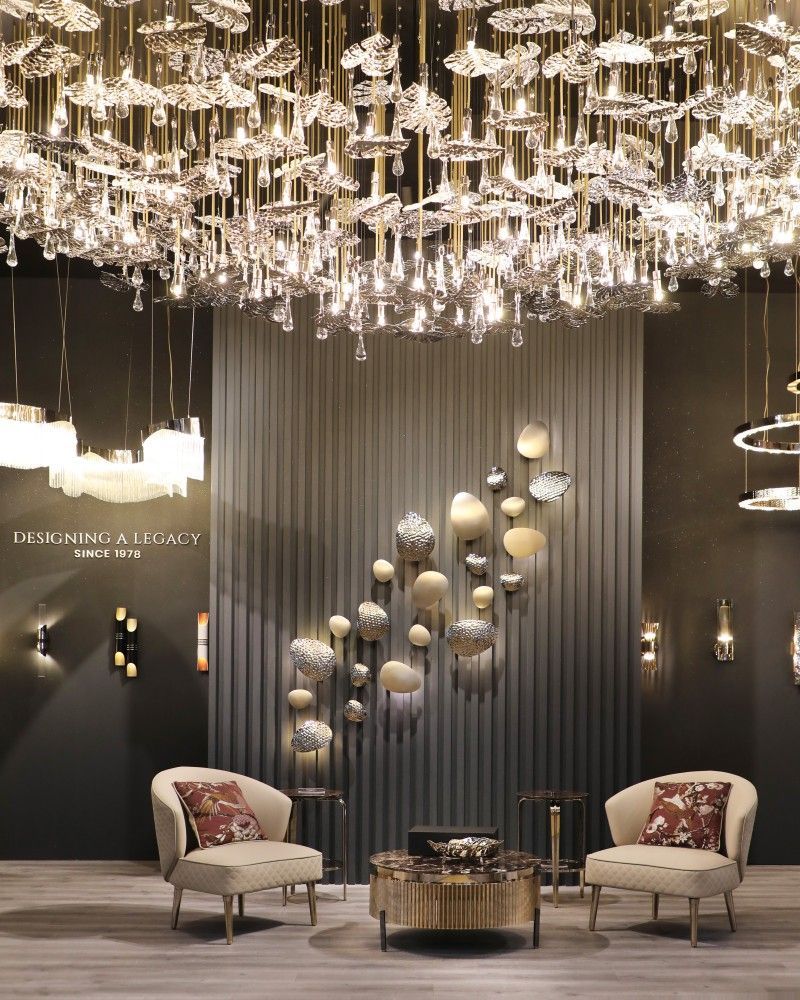A guide to italian interior design
Mastering Italian Interior Design for London Homes
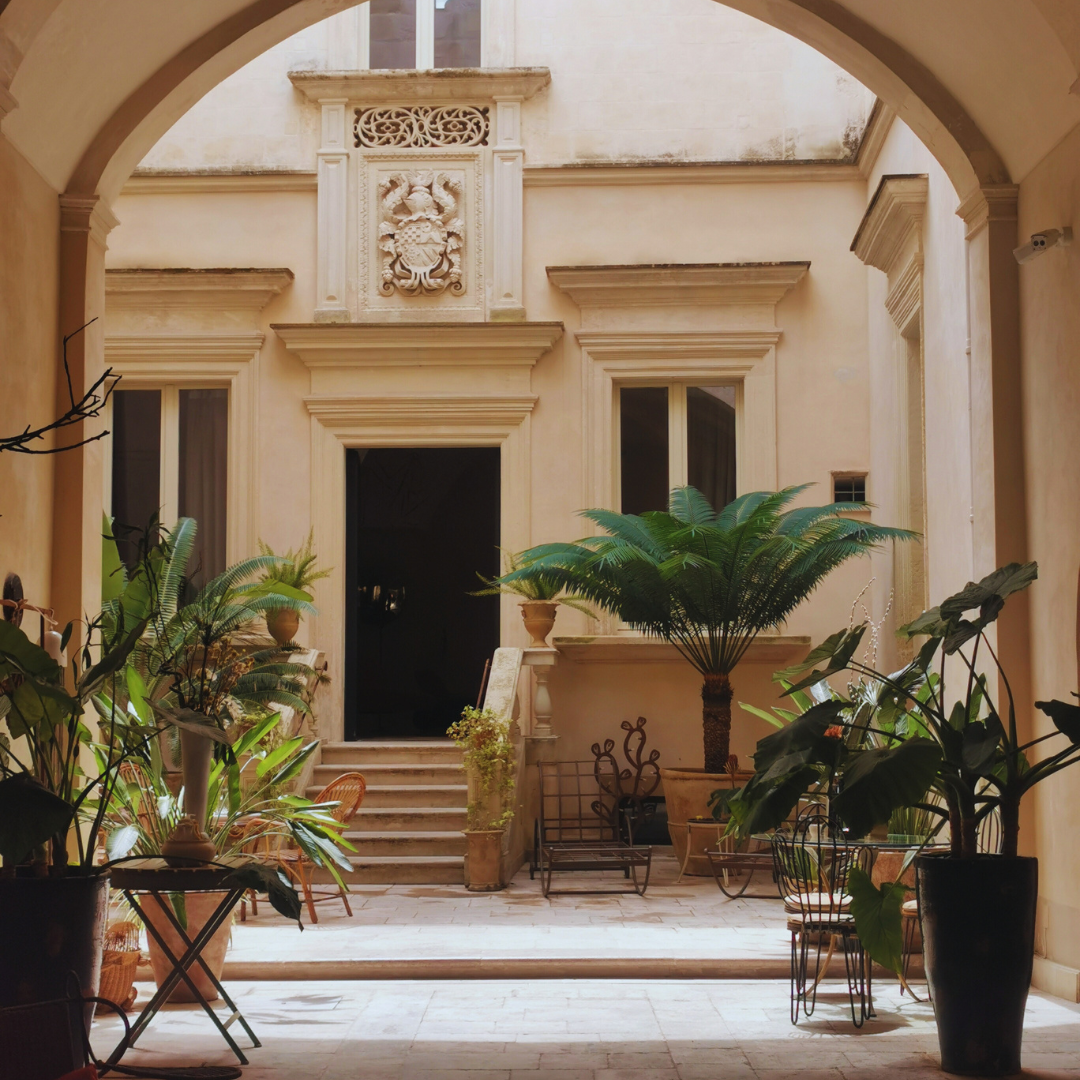
- A Focus on Curation: Instead of just accumulating things, the Italian approach is to carefully select a few high-quality, meaningful pieces. Every item, whether it’s a family heirloom or a striking contemporary sculpture, must truly earn its place.
- Celebrating Imperfection: A genuine patina on an old wooden table or the organic veining in a slab of marble isn't a flaw; it's celebrated. These details add character and tell a story, preventing the space from feeling cold or impersonal.
- Confident Minimalism: This isn't about stark, empty rooms. It’s about knowing when to stop. This approach creates visual breathing room, allowing the standout features—be it the architecture, a piece of art, or a stunning view—to really take centre stage.
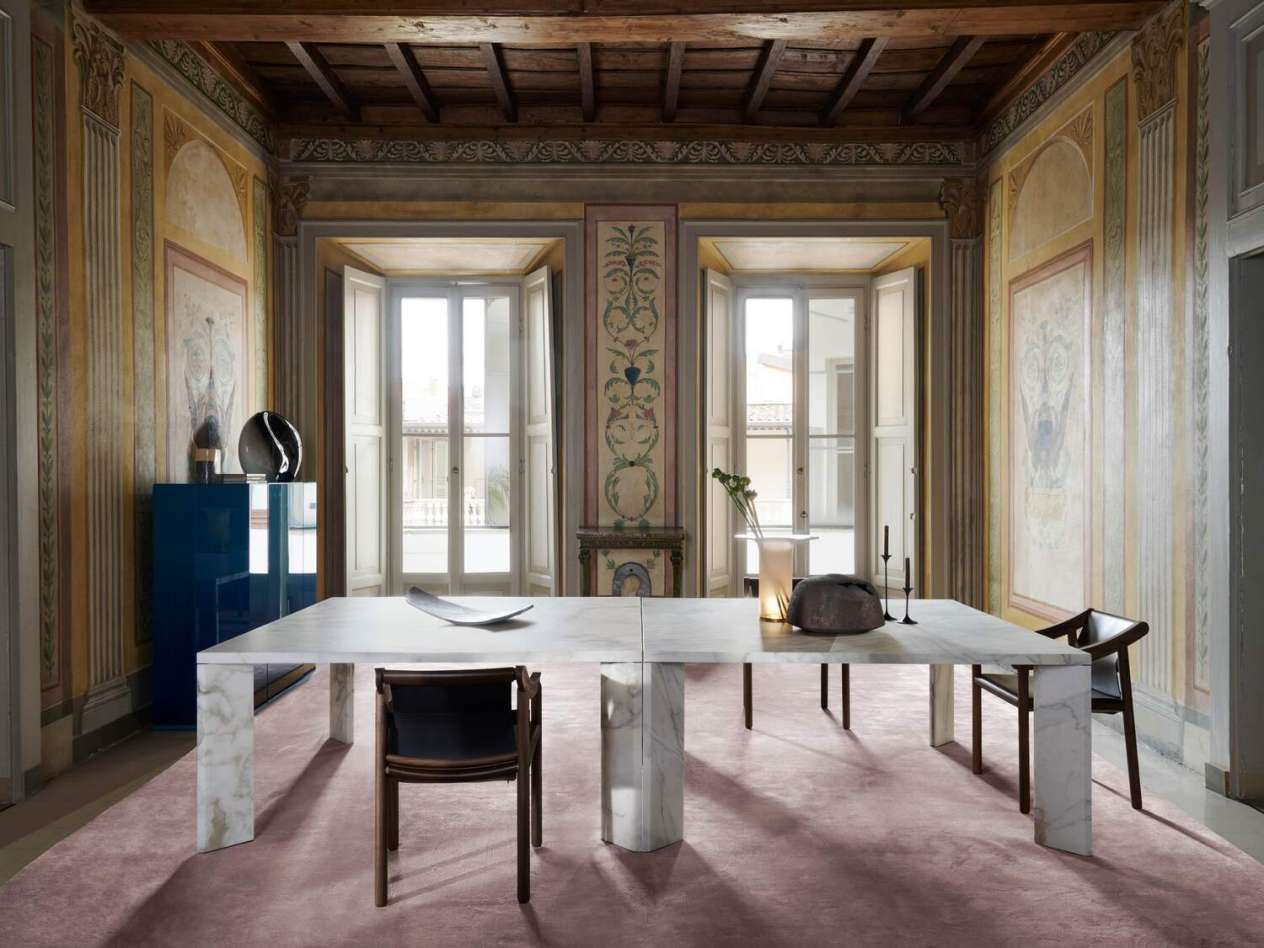
How History Shapes Italian Design Today
A modern living room featuring sleek Italian furniture against a backdrop of classic architectural details.
To really get to grips with Italian interior design, you have to see it not as a single, static style, but as a living conversation between the past and the present. Its DNA is a rich tapestry woven from centuries of artistic and architectural evolution, stretching from the structural genius of the Roman Empire to the creative explosion of the Renaissance.
This deep historical bedrock gives the style a certain gravitas, a timeless quality. Think of the Roman obsession with proportion and symmetry, a principle that still quietly informs the balanced layouts of today’s Milanese apartments. Or consider the Renaissance masters, whose command of colour, form, and human-centric art continues to inspire spaces that are not only beautiful but deeply personal.
The Post-War Design Revolution
While classical roots provide the foundation, the most defining chapter for contemporary Italian design really began in the optimistic decades after the Second World War. The 1950s and 60s, often called “il boom economico”, were a period of incredible growth and creative energy in Italy. This era didn't just rebuild a nation; it completely reshaped its creative identity on the world stage.
A new generation of architects and designers emerged with bold, exciting ideas. Visionaries like Gio Ponti, Achille Castiglioni, and Marco Zanuso were eager to break from convention, experimenting with new materials like moulded plywood, plastics, and tubular steel. This period was marked by a powerful fusion of industrial innovation and pure artistic expression.
This wasn't just about making furniture; it was about reimagining how people could live. The aim was to create pieces that were not only aesthetically groundbreaking but also functional, comfortable, and accessible to a new, modern society.
This energetic movement gave birth to some of the most iconic pieces in design history. The sculptural curve of the Arco Floor Lamp, for example, or the playful form of the Sacco beanbag chair. These weren't just objects; they were statements. They embodied a new way of thinking that blended audacious forms with everyday practicality. This context is crucial because it shows that Italian modernism was never just about cold minimalism; it has always been about
expressive, intelligent, and human-focused design.

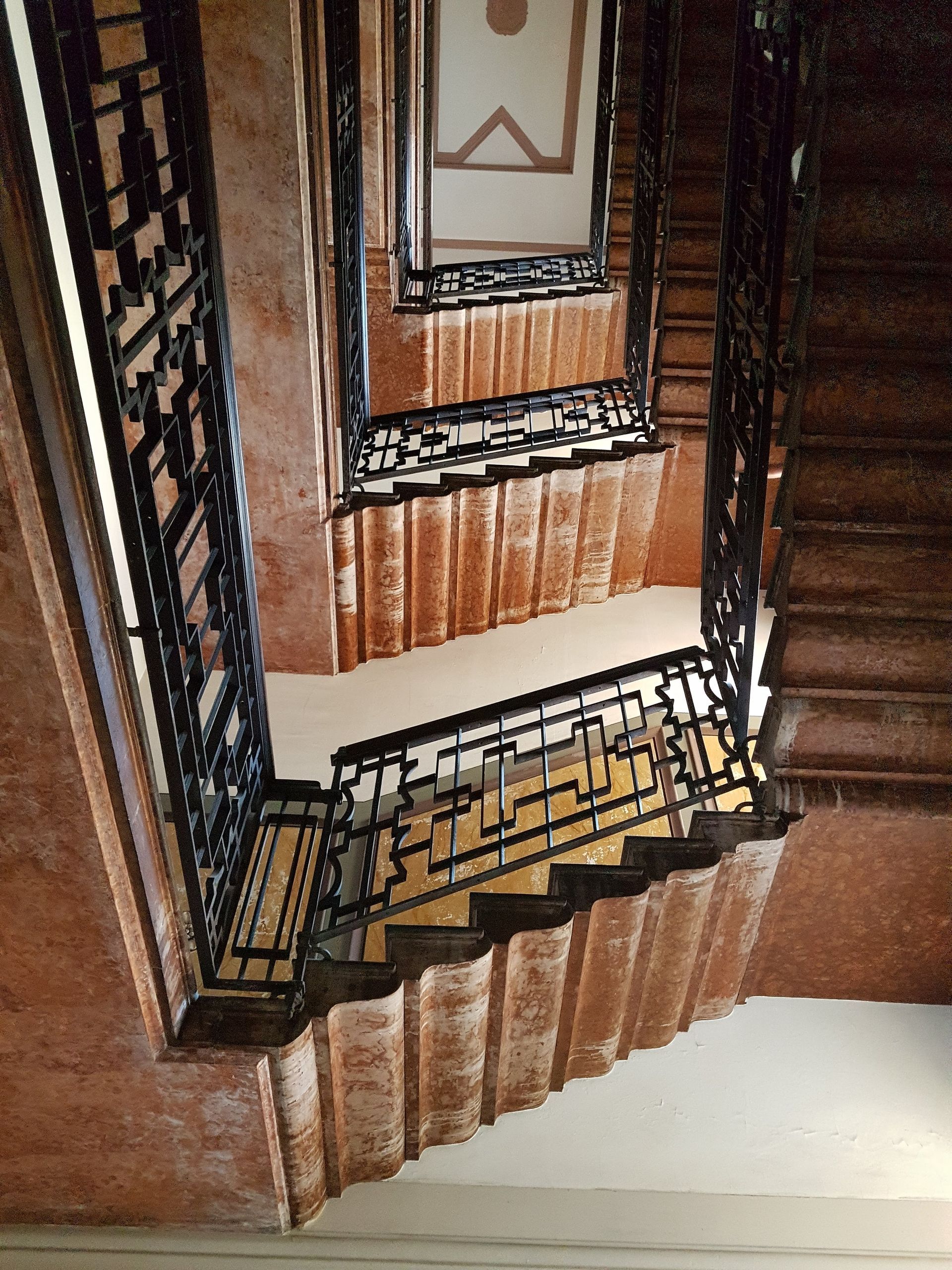
Italy's Enduring Influence on British Style
The impact of this post-war design renaissance quickly rippled beyond Italy's borders. In the UK, a growing appreciation for modernism and cultural exchange introduced these fresh Italian ideas to British architects and designers. Another wave of interest surged in the late 20th and early 21st centuries, as premier Italian furniture firms established flagship showrooms in London, cementing the city as a key hub for European luxury design. You can find more details about the presence of Italian design firms in the UK and this market evolution.
What this journey—from ancient Rome to modern London—really shows is that Italian interior design is a dynamic balance. It carries the weight of history with a light touch, honouring classical principles while celebrating the bold, sculptural forms of the modern era. It’s this unique ability to hold a dialogue with its own past that makes it feel so enduring and relevant today, capable of transforming a London residence into a space of timeless elegance and character.

The Soul of Authentic Italian Style
A modern living room with a statement Murano glass chandelier, a sculptural sofa, and large windows allowing natural light to fill the space.To really understand authentic Italian interior design, you have to look past the surface. It’s not about ticking boxes from a style guide. It’s about grasping the fundamental ideas that give these homes their soul and create an atmosphere of sophisticated, yet utterly liveable, luxury.
These core elements are the building blocks we use to craft a space that feels both deliberate and effortlessly chic. They are the practical application of philosophies like sprezzatura—turning abstract concepts into tangible design choices you can bring into your own London home.
A Dialogue Between Old and New
One of the most captivating traits of Italian style is its seamless ability to weave history with modernity. Think of it as a conversation between generations, where a weathered, centuries-old farmhouse table doesn't just sit next to ultra-sleek chairs—it dialogues with them. This isn't about creating a jarring contrast; it's a thoughtful fusion that builds layers of character.
This principle makes a home feel curated over time, not decorated in a weekend. An antique gilded mirror might reflect a bold piece of contemporary art, or an ancient, raw stone wall could be the backdrop for a high-tech media unit. The secret is that every piece, whether old or new, is chosen for its intrinsic quality, its form, and the story it tells.
This dynamic interplay prevents a room from ever feeling like a museum of one specific era. It’s what gives Italian interiors their timeless, evolving quality—making them feel personal and deeply rooted in a story of both heritage and forward-thinking design.
A Reverence for Craftsmanship
In Italy, fatto a mano, or handmade, isn't just a charming preference; it’s a cultural cornerstone. True Italian interior design places immense value on the skill, time, and artistry poured into creating a single, exceptional piece. It's the absolute antithesis of mass-produced, disposable decor.
This reverence for craftsmanship shows up in a few key ways:
- Material Honesty: Materials are selected for their inherent beauty and longevity. The unique veining in a slab of Carrara marble or the rich grain of solid walnut isn't hidden—it’s celebrated.
- Artisanal Details: You see the quality in the small things—the perfect joinery on a wooden cabinet, the hand-stitched seams on a leather sofa, or the beautiful imperfections of blown glass.
- Investing in Legacy: An Italian-made piece of furniture is seen as an investment. It’s something to be used, cherished, and passed down through the family.
This focus is so powerful that it heavily influences the UK's residential design market. You’ll often see renowned Italian brands like Poltrona Frau, B&B Italia, and Minotti in high-end UK projects, lending spaces the luxury and functional elegance that only superior craftsmanship can deliver. To see the data behind this trend, you can explore the role of Italian brands in the UK interior design industry.
The Power of a Statement Piece
Instead of cluttering a room with lots of small, competing objects, the Italian approach is all about the power of a single, show-stopping piece. This object becomes the confident anchor of the room, dictating the flow and setting the tone for the entire space. It’s a bold declaration of style.
This could be a sculptural, oversized sofa in a vibrant jewel tone, a dramatic Murano glass chandelier that commands the ceiling, or a large-scale work of contemporary art. Everything else in the room is then carefully edited to support this star player, using more subdued furnishings and a clean backdrop.
This creates a powerful focal point and an immediate sense of drama and intent. By letting one hero item shine, the entire room feels more cohesive, considered, and impactful.
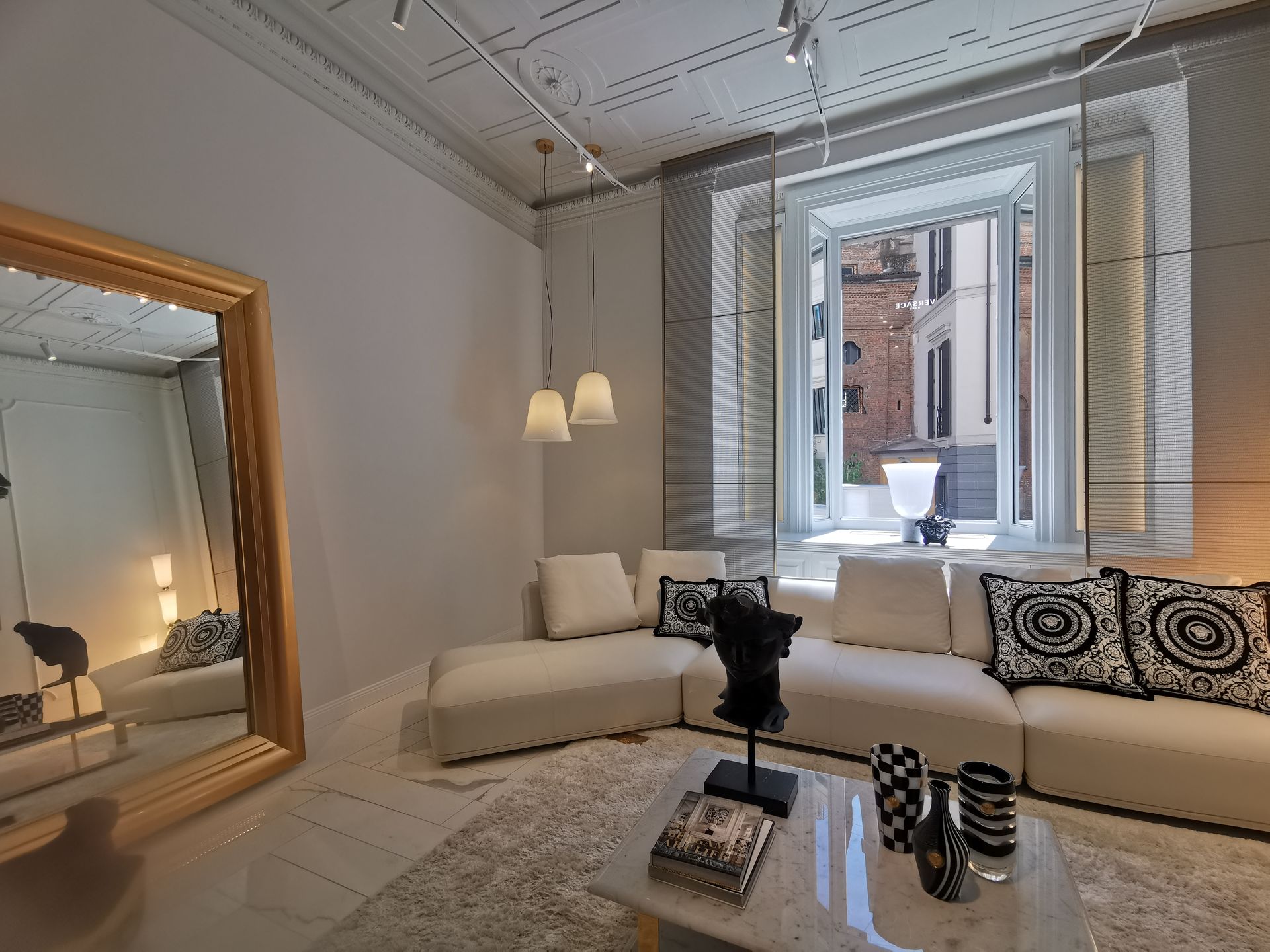
Building the Italian Colour and Material Palette
Crafting a genuine Italian interior is less about following a rulebook and more about orchestrating a sensory experience. It's a careful composition of colour and texture that tells a story of place, history, and a profound respect for the natural world. The goal isn’t to chase trends, but to evoke a feeling—whether that’s the rustic soul of a Tuscan farmhouse or the polished air of a Milanese flat.
To get this right, you have to master the interplay between colour and material. It’s the very essence of the Italian design spirit.
Colours are almost never chosen on a whim; they’re pulled directly from the Italian landscape itself. Think of the sun-bleached terracotta of ancient rooftops, the deep olive greens of rolling hillsides, and the creamy beiges of travertine quarries. These earthy, warm neutrals anchor most palettes, creating spaces that feel grounded, serene, and deeply connected to nature.
This foundational warmth is often balanced with whites and soft greys. The purpose here isn't to create a cold, clinical space, but to amplify natural light. This is a brilliant strategy for a London home, which might not be blessed with the same intense Mediterranean sun. Lighter shades open everything up, making rooms feel larger and brighter.
The Foundation of Natural Materials
In Italian design, materials are chosen for their honesty, their longevity, and their inherent beauty. This is where the commitment to fatto a mano (handmade) and quality craftsmanship really comes to the forefront. These aren’t just finishes; they are integral to the home’s structure and story, adding layers of texture and character that synthetics simply cannot replicate.
A few key players you’ll see time and again:
- Marble and Travertine: Quarried from the Italian earth for millennia, these stones are pillars of the design style. Whether it’s the dramatic veining of Calacatta marble on a kitchen island or the porous, soft texture of travertine flooring, these materials bring a sense of history and undeniable luxury.
- Rich Woods: Deep, warm woods like walnut, olive, and dark oak are favourites for cabinetry, flooring, and furniture. The focus is always on showcasing the natural grain and character, bringing an organic warmth and richness into the home.
- Terracotta and Plaster: For a more rustic, earthy feel, terracotta tiles are unparalleled. Walls are often finished with Venetian plaster, which has a soft, multi-tonal lustre that gives it depth and movement, catching the light in a way flat paint never could.
This thoughtful selection of materials is about creating a canvas that is both incredibly durable and completely timeless.
When it comes to using these classic materials, the application can vary dramatically, shifting from traditional opulence to modern minimalism. The table below shows just how versatile these materials can be.
In Italian interior design, space itself is treated as a luxury. An uncluttered layout that prioritises flow and breathability is just as important as the materials chosen. This isn't about emptiness, but about creating a calm, composed environment where each piece can be appreciated.
This 70% open space guideline helps ensure that sightlines remain clear and movement feels effortless.
Textiles you'll frequently find include:
- Leather: A buttery-soft leather sofa or armchair is a classic choice. It ages beautifully, developing a rich patina over time that adds to its character.
- Linen and Cotton: Used for curtains, bedding, and slipcovers, these breathable fabrics introduce a touch of relaxed, casual elegance.
- Silk and Velvet: For a more opulent feel, velvet cushions or a silk throw can bring in a hint of glamour and rich colour, all without overwhelming the serene, neutral palette.
Ultimately, building an Italian palette is an exercise in restraint and a commitment to quality. It’s about choosing materials that tell a story and layering them with intention to create a home that is both a sophisticated showpiece and a deeply comfortable sanctuary.
Bringing Italian Design Home to London
This is where theory meets reality. Translating the grand, sun-drenched spirit of Italian interior design into the unique fabric of a London home is an art of adaptation, not just imitation. The real skill lies in capturing the essence of Italian elegance—its clean lines, masterful use of materials, and curated feel—while honouring the distinct character of London architecture, from period properties to contemporary new-builds.
The key is using classic Italian techniques to solve quintessentially London design challenges. Many city homes, especially older Georgian or Victorian terraces, have layouts that can feel compartmentalised or lack the abundant natural light of a Mediterranean villa. It’s here that the Italian approach offers brilliant, elegant solutions.
Embracing an open-plan philosophy, where possible, creates a far better sense of flow and connection between living spaces. This doesn't always mean knocking down every wall. Sometimes, the most effective change is creating wider doorways or replacing solid doors with glass-panelled ones, encouraging light to travel deeper into the home.
The Italian approach teaches us that what you don't put in a room is as important as what you do. Resisting the urge to overfill a space allows each piece to breathe and lets the architecture itself shine through.
Sourcing and Integrating Iconic Pieces
Integrating authentic Italian furniture is fundamental to achieving this look, and London is a global hub for luxury design. We have incredible access to flagship showrooms for iconic brands like B&B Italia, Cassina, and Minotti. Investing in a single, high-quality statement piece—a sculptural armchair or a beautifully engineered dining table—can anchor an entire design scheme.
Seamlessly Integrating Modern Technology
A truly modern luxury home must accommodate smart technology, but the Italian aesthetic demands it be done with subtlety and discretion. The goal is to integrate function without disrupting the clean, elegant lines of the interior.
Here are a few ways we achieve this:
- Concealed Audio: We often specify in-wall or in-ceiling speakers that can be plastered over and painted to match the wall, becoming completely invisible.
- Smart Lighting: Installing smart lighting systems allows for control via minimalist wall panels or an app, eliminating the need for cluttered banks of traditional light switches.
- Bespoke Joinery: Custom-built cabinetry is your greatest ally. It can be designed to elegantly hide televisions, charging stations, and other devices behind sleek, seamless doors when they're not in use.
By thoughtfully applying these strategies, you can masterfully adapt the principles of Italian design to create a London home that feels both worldly and wonderfully personal. It's a fusion of Italian confidence and British character that results in a space that is sophisticated, functional, and effortlessly elegant.
Choosing this approach is a quiet declaration of confidence. It’s the art of curation, knowing that every object has earned its place, and having the assurance to let empty space speak for itself. The result? A home that feels both sophisticated and profoundly welcoming—the perfect stage for la dolce vita.
Key Principles for Your Home
To bring this spirit into your own London home, it helps to keep a few core principles in mind. Think of them as guideposts for making decisions that feel authentic to the Italian way of thinking about a space.
- Blend History with Modernity: This is where the magic happens. Don’t be afraid to mix that antique find with a sleek, contemporary sofa. This creates a home that feels layered, personal, and tells a story.
- Honour True Craftsmanship: This is a call to prioritise fewer, better things. Invest in pieces made with exceptional materials and artisanal skill. They won’t just last a lifetime; they’ll get better with age.
- Design for Joy and Connection: Ultimately, a home is for living in. Create spaces that are as inviting as they are elegant, designed for conversation, connection, and savouring the small moments of life.
Adopting the Italian design mindset means creating a home that tells your personal story with clarity and character. It’s about investing in a quality of life where beauty and function exist in perfect harmony, empowering you to live more beautifully every single day.
This approach ensures your home is never just a collection of beautiful objects. Instead, it becomes a true reflection of a life well-lived—a timeless legacy of your own making.
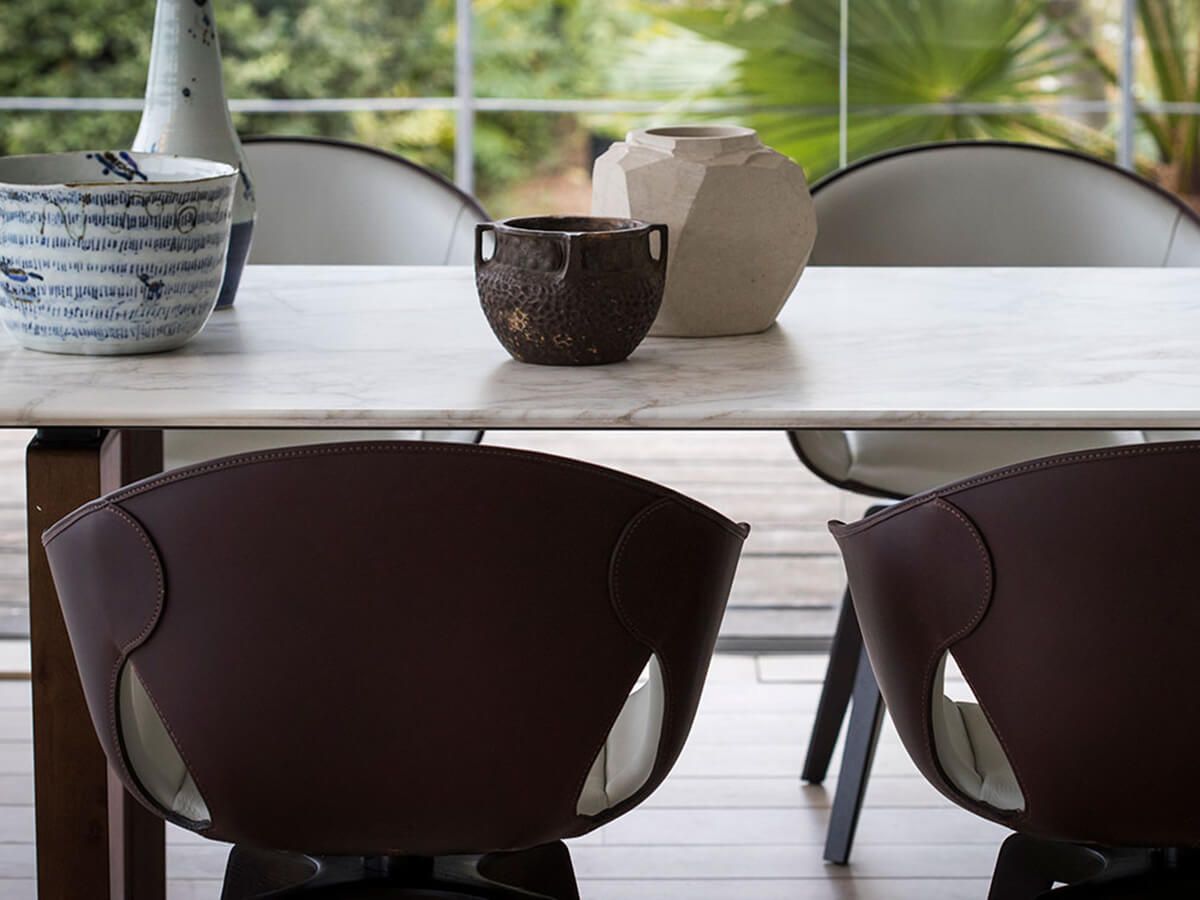
Frequently Asked Questions
When you start exploring Italian interior design, a few practical questions naturally come up, especially when you're thinking about how it all works in a unique setting like a London home. Here are some of the common things we get asked, demystified to help you bring this elegant style into your life with confidence.
How Can I Achieve an Italian Look on a Budget?
While we often associate it with pure luxury, the soul of Italian design is actually rooted in the idea of ‘fewer, better things’. You don’t need to flood a room with expensive items to get it right.
Instead, invest in one incredible anchor piece—a beautifully crafted sofa, perhaps, or a classic armchair that will stand the test of time. From there, you can build out your design. Keep an eye out for vintage Italian furniture at flea markets or online; pieces with character are what you're after.
For surfaces, you can find stunning premium porcelain tiles that mimic the look of marble or travertine for a fraction of the cost. Ultimately, the real secret is mastering those clean lines, the uncluttered curation, and the sophisticated colour palette. Those principles are what truly count, and they work at any budget.
The heart of a budget-friendly Italian style lies in strategic investment. It’s all about knowing where to spend for the biggest impact and where you can save without losing that core aesthetic of curated elegance and simplicity.
How Do I Mix Italian Design with British Architecture?
This is the perfect ‘Old Meets New’ scenario, and it’s where Italian design truly comes alive. The key is to let your home's original features—like ornate Victorian cornices or classic sash windows—be the ‘old’ in the story.
Then, you introduce the ‘new’ with sleek, minimalist Italian furniture. Imagine a contemporary, low-profile sofa set against a wall with historic molding. The contrast is stunning and creates a look that feels incredibly high-end and intentional.
You could also hang a modern Italian light fixture as a centerpiece to juxtapose the traditional architecture. This fusion of British history and Italian modernity creates an interior that feels deeply personal and sophisticated—grounded in the past, but looking firmly to the future.
Is Italian Design Suited for Smaller London Flats?
Absolutely. Modern Italian design, particularly the Milanese style, is brilliant at making the most of apartment living. It leans heavily on light, neutral colour palettes—think whites, greys, and beiges—which work wonders to create a sense of space and amplify natural light, a precious commodity in any city home.
A few key strategies we always use:
- Place large mirrors strategically to reflect light and create an illusion of depth.
- Choose multi-functional furniture that works hard without adding clutter.
- Prioritize an uncluttered environment to give the space visual breathing room.
By focusing on a few high-impact pieces rather than lots of small items, you can create a home that feels both luxurious and expansive. It’s proof that great Italian design isn’t about the size of the space, but the intelligence of the design within it.
Ready to bring timeless Italian elegance into your London home? At Romano Interior Architecture, we blend classic inspiration with modern luxury to create spaces that are as unique as you are. Discover how we can craft your perfect home today.
